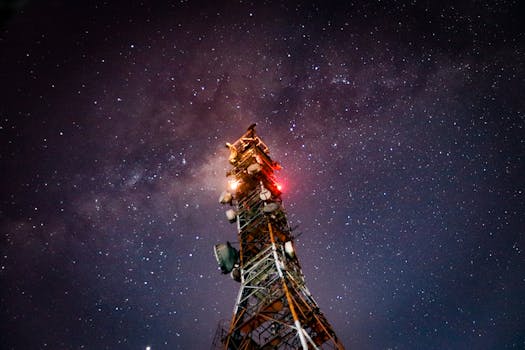
MEO Satellites: Revolutionizing Global Communication with Medium Earth Orbit Technology
MEO satellites, or Medium Earth Orbit satellites, are a type of satellite that operates at an altitude of approximately 2,000 to 36,000 kilometers above the Earth’s surface. This orbit is significantly lower than the Geostationary Orbit (GEO) used by traditional satellites, which are positioned at an altitude of around 36,000 kilometers. The lower orbit of MEO satellites allows for faster and more reliable communication, making them an attractive option for a wide range of applications, including telecommunications, navigation, and Earth observation.
The use of MEO satellites is becoming increasingly popular due to their ability to provide high-speed, low-latency connections. This is particularly important for applications that require real-time communication, such as video conferencing, online gaming, and financial transactions. MEO satellites are also more resistant to interference and signal degradation, ensuring a more stable and secure connection.
How MEO Satellites Work
MEO satellites work by using a network of satellites in medium Earth orbit to provide coverage over a specific region or the entire globe. Each satellite is equipped with a payload of transponders, which are used to receive and transmit signals to and from Earth stations. The satellites are also equipped with propulsion systems, which allow them to maintain their orbit and position.
The use of MEO satellites offers several advantages over traditional GEO satellites. For example, MEO satellites have a lower latency due to their closer proximity to the Earth, which results in faster communication. They also have a higher signal-to-noise ratio, which provides a more stable and secure connection. Additionally, MEO satellites can provide a more flexible and scalable solution, as they can be easily reconfigured to meet changing demands.
Applications of MEO Satellites
MEO satellites have a wide range of applications, including telecommunications, navigation, Earth observation, and scientific research. In the field of telecommunications, MEO satellites can be used to provide broadband internet access, mobile phone coverage, and other communication services. They can also be used for navigation, such as providing location information and timing signals for GPS and other satellite navigation systems.
In the field of Earth observation, MEO satellites can be used to collect data on the environment, climate, and natural resources. They can also be used for scientific research, such as studying the Earth’s magnetic field, atmosphere, and oceans. Additionally, MEO satellites can be used for military and defense applications, such as providing secure communication and surveillance capabilities.
Benefits and Challenges of MEO Satellites
The use of MEO satellites offers several benefits, including faster and more reliable communication, higher signal-to-noise ratio, and more flexible and scalable solutions. However, there are also several challenges associated with the use of MEO satellites, such as the high cost of launching and operating a network of satellites, the complexity of managing a large constellation of satellites, and the potential for interference and signal degradation.
Despite these challenges, the use of MEO satellites is becoming increasingly popular, and several companies are investing heavily in the development of MEO satellite constellations. These constellations are expected to play a major role in the provision of global communication services, particularly in areas where traditional communication infrastructure is limited or non-existent.
Conclusion
In conclusion, MEO satellites are revolutionizing the way we communicate globally, offering faster and more reliable connections than traditional GEO satellites. The use of MEO satellites has several advantages, including lower latency, higher signal-to-noise ratio, and more flexible and scalable solutions. While there are several challenges associated with the use of MEO satellites, the benefits they offer make them an attractive option for a wide range of applications, including telecommunications, navigation, and Earth observation.




